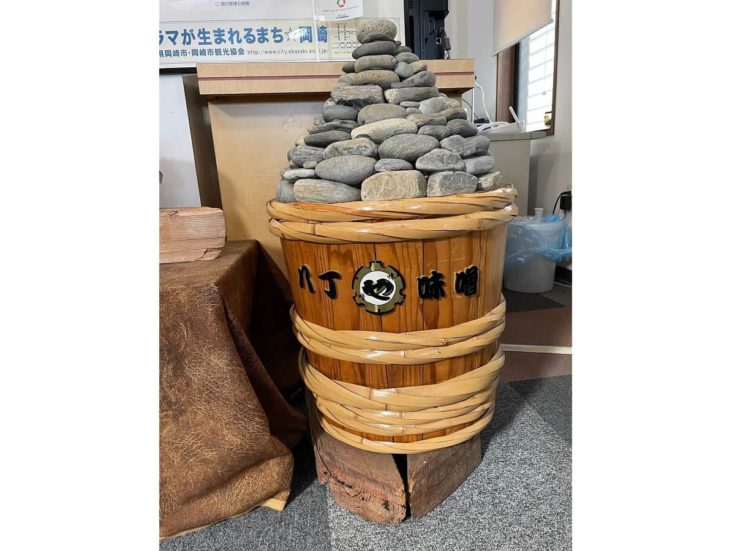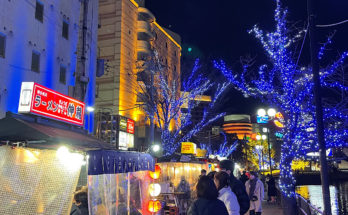What’s miso?
Miso is the traditional Japanese fermented condiment made of soybeans, water, and koji mold. The way of making it is not rocket science, so you can make it from scratch by yourself even at home. Therefore, I introduced you to how to make homemade miso in my previous article on this site. I’d be glad if you’d check it out if you are interested in that. How to make homemade miso
Speaking of miso, there are tons of kinds in Japan. Each of them has a different production process depending on the location because its taste and flavor are largely affected by climate or temperature.
In my hometown, Aichi Prefecture, which is located in the center of Japan and has hot and humid weather in summer, red miso is the most popular to eat. Generally, the longer the miso is ripened in hot and humid weather, the deeper its taste becomes. In other words, my hometown is the most suitable place to make such richly flavored miso in Japan.
The rich taste of red miso goes with not only miso soup but also simmered dishes such as oden or curry because the flavor doesn’t disappear even if it’s well cooked. Therefore, it’s also good to use it as a secret condiment to enhance the flavor.

Hatcho Miso (八丁味噌)
Among such red miso, “Hatcho Miso (八丁味噌)” is the most classic and richest one. The origin of the name “Hatcho” comes from the distance from the Okazaki Castle, which was the birthplace of Shogun Tokugawa Ieyasu(徳川家康公 ). The distance was about 870m east of the castle, which was called “Hatcho (八丁)” in the Edo period. Therefore, we call the miso made in the plant about 870m east far from the castle “Hatcho Miso.”

Traditional method of making Hatcho Miso
The deep brownish miso has two distinct features.
First is the ingredients. This miso has been made from only soybeans, salt, and soybean-koji mold from the get-go, which has not changed for over 300 years. It takes two summers and winters to ferment it by using nature’s power without any human support. The simple way of making it brings out the original flavors of the ingredients.
Second is the traditional method that has been continuously used since the Edo period. The well-skilled craftsmen use gigantic wooden barrels to ferment soybeans mixed with soybean-koji mold, even in the modern age. By using wooden barrels with good microbes, the taste becomes much richer and milder. The diameter and height of the wooden barrel are both 2 meters, and the weight is 700 kilograms. Most of the barrels have been used for 100 years on average. To my surprise, the oldest one was made in 1864, and it is being used even now.

After packing the soybeans into the barrel, the craftsmen pile big heavy stones one by one on top of the soybeans by hand. Surprisingly, piling the stones neatly and conically is so challenging that it takes over 10 years for the craftsmen to acquire the skill completely.


Next, the barrels are kept in a wooden warehouse where the temperature and humidity are steady for a whole year. When you enter the warehouse, the pleasant smell of miso enters your nose slightly, which might improve your appetite.


After taking a long time to ferment over the course of two years, the miso grows condensed with soybean taste and the flavor becomes much richer. After it is certified as a genuine Hatcho Miso, it’s delivered all over the world.
The two shops making and selling Hatcho Miso in Okazaki
Nowadays, there are only two plants that are still making the miso in such traditional ways. One of them is “Kaku-Kyu(カクキュー), and the other is “Maruya(まるや).” Both stand on the road named “Old Tokaido(旧東海道)” in the center of Okazaki City. They offer a free plant tour for visitors throughout the year. The tour is available any time when you visit if there is a vacancy, so you don’t need to book it in advance. I’m afraid that they don’t provide a tour in English for now. However, you can get a brochure in English there and see their own websites in English as well beforehand, which will help you understand what Hatcho Miso is like. Please check the links below.
In addition, they have a souvenir shop and restaurant that sells a variety of food including sweets made from Hatcho-Miso. In particular, ice cream with miso flavor from Kaku-Kyu is so popular and instagrammable that many people visit there to enjoy it. The fusion between sweet and salty miso flavors is eye-opening. I’m sure you’ll like it.

Other than miso-flavored ice cream, you can get potato chips with miso powder, sweet buns inside miso-tasted red beans, miso sauce, and so on at the shops. Traditional miso has been processed and changed into modern food by combining it with new products.

Protecting firmly the traditional method continuing from the Edo period, Hatcho Miso is making a new history. I’d say that’s the beauty of products made using traditional methods.
Why not visit the plants and observe the craftsmen’s skills first-hand? This will help you understand the importance of preserving tradition.
I live with a husband, three daughters, and a black Shiba Inu in Aichi. I love traveling abroad, playing with my dog, and eating fermented food. I eat rice, a miso soup, natto, and yogurt for breakfast almost every day. This is one of my tips for staying in good shape.







Thank you for sharing information about your local Haccho miso! I tried making miso-oden, and I really enjoyed it! I’m not sure if I prepared it correctly, though. I’m also interested in miso ice cream and love kishimen! I hope to visit you someday in the future!